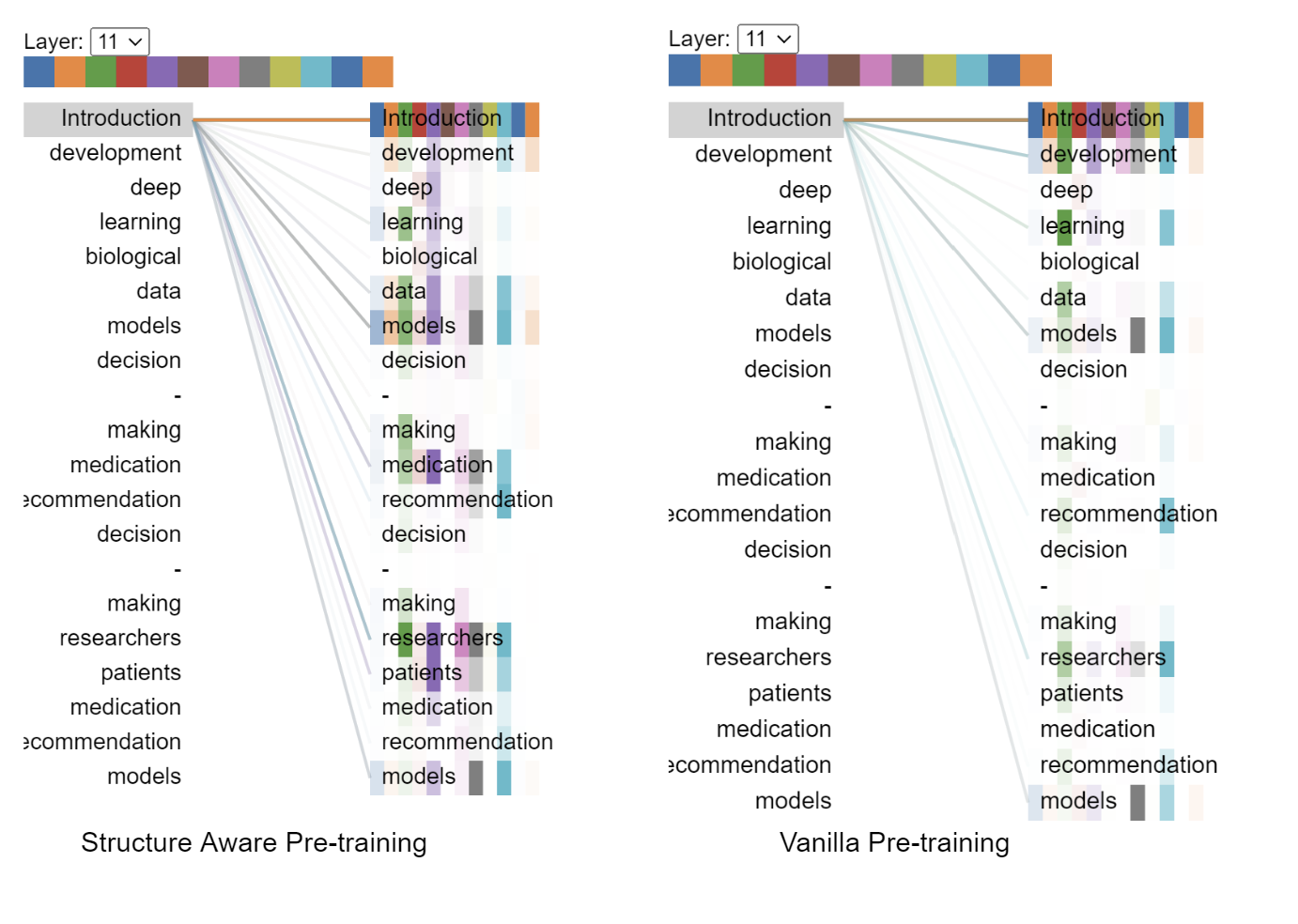StructFormer
Document Structure-Based Pre-training
Abstract
Most state-of-the-art techniques for Language Models (LMs) today rely on transformer-based architectures and their ubiquitous attention mechanism. However, the exponential growth in computational requirements with longer input sequences confines Transformers to handling short passages. Recent efforts have aimed to address this limitation by introducing selective attention mechanisms, notably local and global attention. While sparse attention mechanisms, akin to full attention in being Turing-complete, have been theoretically established, their practical impact on pre-training remains unexplored. This study focuses on empirically assessing the influence of global attention on BERT pre-training. The primary steps involve creating an extensive corpus of structure-aware text through arXiv data, alongside a text-only counterpart. We carry out pre-training on these two datasets, investigate shifts in attention patterns, and assess their implications for downstream tasks. Our analysis underscores the significance of incorporating document structure into LM models, demonstrating their capacity to excel in more abstract tasks, such as document understanding.

StructFormer introduces a novel approach to help language models better understand document structure during pre-training. By incorporating document headers as global attention tokens, the model learns to recognize and utilize document organization for improved comprehension.
The Challenge
Modern language models face two key limitations when processing long documents:
- Computational constraints with increasing sequence length
- Limited understanding of document structure and organization
While sparse attention mechanisms help address the first issue, existing approaches typically ignore document structure during pre-training, only utilizing it during fine-tuning.
Our Approach & Results

StructFormer modifies the pre-training process to make models inherently structure-aware through:
- Document headers as global attention tokens during pre-training
- Combined local and global attention mechanisms
- Structure-aware training data from LaTeX documents
- Sparse attention patterns for efficiency
Results & Analysis
SciREX Performance (End-to-end predicted input)
| Task | Model | Precision | Recall | F1 |
|---|---|---|---|---|
| Salient Clusters | StructFormer | 0.2581 | 0.6127 | 0.3419 |
| SciREX Baseline | 0.2230 | 0.6000 | 0.3070 | |
| Binary Relations | StructFormer | 0.0550 | 0.5100 | 0.0890 |
| SciREX Baseline | 0.0650 | 0.4110 | 0.0960 | |
| 4-ary Relations | StructFormer | 0.0019 | 0.2760 | 0.0037 |
| SciREX Baseline | 0.0070 | 0.1730 | 0.0080 |
GLUE Benchmark Results
| Task | Metric | Vanilla Longformer | StructFormer | BERT base |
|---|---|---|---|---|
| CoLA | Mathews Correlation | 0.502 | 0.469 | 0.521 |
| STSB | Combined Score | 0.871 | 0.856 | 0.858 |
| MRPC | F1 | 0.904 | 0.927 | 0.900 |
| QNLI | Accuracy | 0.908 | 0.910 | 0.905 |
| SST2 | Accuracy | 0.928 | 0.933 | 0.935 |
| MNLI | Accuracy | 0.867 | 0.870 | 0.833 |
The results demonstrate StructFormer’s superior performance in document understanding tasks, particularly in salient cluster identification where it outperforms the baseline by ~3.5 percentage points. On GLUE tasks, StructFormer maintains competitive performance with BERT base while excelling in tasks like MRPC and QNLI, showing its structure-awareness doesn’t compromise general language understanding capabilities.
Pipeline Implementation

The implementation involves:
- Processing 1.1M+ LaTeX documents from arXiv
- Combining local windowed attention with global attention for headers
- Using headers as global attention tokens during pre-training
- Fine-tuning on downstream tasks while maintaining structural awareness